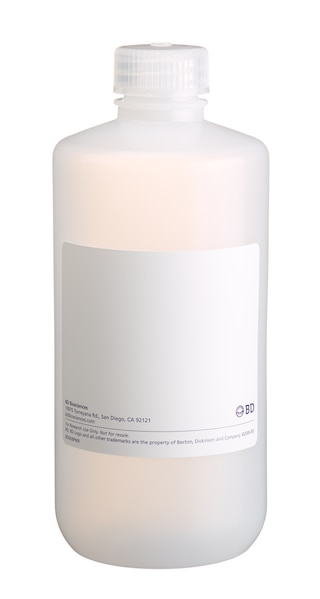Old Browser
This page has been recently translated and is available in French now.
Looks like you're visiting us from United States.
Would you like to stay on the current country site or be switched to your country?
BD® AbSeq Oligo Mouse Anti-Bcl-6
Clone K112-91 (RUO)


Regulatory Status Legend
Any use of products other than the permitted use without the express written authorization of Becton, Dickinson and Company is strictly prohibited.
Preparation And Storage
Recommended Assay Procedures
Put all BD® AbSeq reagents to be pooled into a Latch Rack for 500 µL Tubes (Thermo Fisher Scientific Cat. No. 4900). Arrange the tubes so that they can be easily uncapped and re-capped with an 8-Channel Screw Cap Tube Capper (Thermo Fisher Scientific Cat. No. 4105MAT) and the reagents aliquoted with a multi-channel pipette. BD® AbSeq tubes should be centrifuged for = 30 seconds at 400 × g to ensure removal of any content in the cap/tube threads prior to the first opening.
When using BD® AbSeq intracellular markers with the Single Cell 3' Sequencing Intracellular CITE-seq, cells must first be fixed and permeabilized using the BD Rhapsody™ Intracellular AbSeq Buffer Kit before the antibody-oligo can bind to the protein. Refer to the list of required companion products below and see BD Rhapsody™ System Single-Cell Labelling with BD® AbSeq Ab-Oligos for Intracellular CITE-seq (Doc ID: 23-24464) for the complete BD® AbSeq intracellular multiomics staining protocol. Contact your local Field Application Specialist (FAS) for additional guidance.
Use standard laboratory safety protocols. Read and understand the safety data sheets (SDSs) before handling chemicals. To obtain SDSs, go to regdocs.bd.com or contact BD Biosciences technical support at scomix@bdscomix.bd.com.
Warning: All biological specimens and materials contacting them are considered biohazardous. Handle as if capable of transmitting infection and dispose of with proper precautions in accordance with federal, state, and local regulations. Never pipette by mouth. Wear suitable protective clothing, eyewear, and gloves.
Product Notices
- Please refer to www.bdbiosciences.com/us/s/resources for technical protocols.
- This reagent has been pre-diluted for use at the recommended volume per test. Typical use is 2 µl for 1 × 10^6 cells in a 200-µl staining reaction.
- Caution: Sodium azide yields highly toxic hydrazoic acid under acidic conditions. Dilute azide compounds in running water before discarding to avoid accumulation of potentially explosive deposits in plumbing.
- The production process underwent stringent testing and validation to assure that it generates a high-quality conjugate with consistent performance and specific binding activity. However, verification testing has not been performed on all conjugate lots.
- Illumina is a trademark of Illumina, Inc.
- Source of all serum proteins is from USDA inspected abattoirs located in the United States.
- Species cross-reactivity detected in product development may not have been confirmed on every format and/or application.
- Please refer to http://regdocs.bd.com to access safety data sheets (SDS).
- Please refer to bd.com/genomics-resources for technical protocols.
- For U.S. patents that may apply, see bd.com/patents.
Data Sheets
Companion Products






The K112-91 monoclonal antibody specifically binds to Bcl-6. Bcl-6 was first identified as a proto-oncogene frequently deregulated by chromosomal translocations in non-Hodgkin B-cell lymphomas. It is a nuclear transcriptional repressor of the BTB/POZ zinc-finger family of transcription factors. In addition to its roles in cancer, Bcl-6 plays important roles in the differentiation of normal cells including B cells, thymocytes, CD4+ or CD8+ T cells. Bcl-6 is highly expressed in germinal center B cells, where it promotes the germinal center reaction by inducing proliferation and inhibiting the DNA-damage response. Bcl-6 has been identified as a key factor in promoting the differentiation of CD4+ follicular T helper (Tfh) cells that are involved in promoting germinal center formation and providing help to B cells. The interplay of Bcl-6 and another transcriptional repressor, Blimp-1, is thought to be critical in defining the results of both B-cell and T-cell differentiation.
Development References (10)
-
Baumjohann D, Okada T, Ansel KM. Cutting Edge: Distinct Waves of BCL6 Expression during T Follicular Helper Cell Development. J Immunol. 2011; 187(5):2089-2092. (Clone-specific: Flow cytometry). View Reference
-
Choi YS, Kageyama R, Eto D, et al. ICOS receptor instructs T follicular helper cell versus effector cell differentiation via induction of the transcriptional repressor Bcl6.. Immunity. 2011; 34(6):932-46. (Clone-specific: Flow cytometry). View Reference
-
Chung Y, Tanaka S, Chu F, et al. Follicular regulatory T cells expressing Foxp3 and Bcl-6 suppress germinal center reactions. Nat Med. 2011; 17(8):983-988. (Clone-specific: Flow cytometry). View Reference
-
Crotty S, Johnston RJ, Schoenberger SP. Effectors and memories: Bcl-6 and Blimp-1 in T and B lymphocyte differentiation. Nat Immunol. 2010; 11(2):114-120. (Biology). View Reference
-
Crotty S. Follicular Helper CD4 T Cells (Tfh). Annu Rev Immunol. 2011; 29(1):621-663. (Biology). View Reference
-
Eto, D., C. Lao, et al. IL-21 and IL-6 are critical for different aspects of B cell immunity and redundantly induce optimal follicular helper CD4 T cell (Tfh) differentiation. PLoS ONE. 2011; 6(3):e17739. (Clone-specific: Flow cytometry). View Reference
-
Fazilleau N, McHeyzer-Williams LJ, Rosen H, McHeyzer-Williams MG. The function of follicular helper T cells is regulated by the strength of T cell antigen receptor binding. Nat Rev Immunol. 2009; 10(4):375-384. (Biology). View Reference
-
Johnston RJ, Poholek AC, DiToro D, et al. Bcl6 and Blimp-1 are reciprocal and antagonistic regulators of T follicular helper cell differentiation.. Science. 2009; 325(5943):1006-10. (Biology). View Reference
-
Klein U, Dalla-Favera R. Germinal centres: role in B-cell physiology and malignancy. Nat Rev Immunol. 2008; 8(1):22-33. (Biology). View Reference
-
Nurieva RI, Chung Y, Martinez GJ, et al. Bcl6 mediates the development of T follicular helper cells. Science. 2009; 325(5943):1001-1005. (Biology). View Reference
Please refer to Support Documents for Quality Certificates
Global - Refer to manufacturer's instructions for use and related User Manuals and Technical data sheets before using this products as described
Comparisons, where applicable, are made against older BD Technology, manual methods or are general performance claims. Comparisons are not made against non-BD technologies, unless otherwise noted.
For Research Use Only. Not for use in diagnostic or therapeutic procedures.